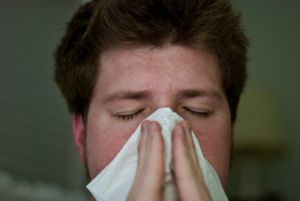News
As the Danish allergy season heats up, there is a way to save on meds
This article is more than 9 years old.
Going to the pharmacy may actually be less expensive for a change

Relief could be cheaper than you think (photo: William Brawley)
The Danish allergy season can be rough. Doctors estimate that one in five Danes suffer from at least one sort of seasonal allergy.
National weather service DMI says that this year’s birch pollen season could be a rough one, and it has been in full swing since yesterday in the east of the country. DMI keeps track of the daily pollen count on its website.
Many people pop into the local shop, supermarket or even service station to grab a small package of over-the-counter meds to knock back the symptoms. But that may not be the most cost-effective solution.
Convenience can be costly
A new study by pharmaceutical association Apotekerforeningen for Metroxpress reveals that allergy medications cost less than a third of the price if purchased at the pharmacy – especially if the sufferer chooses generic drugs in large packages that have the same effect.
Small packages of brand name drugs often cost as much as six kroner per tablet in shops, while generic drugs in large packages at the pharmacy can cost as little as one kroner per tablet.
“It is the same medicine you can get at the pharmacy,” said Apotekerforeningen health director Birthe Søndergaard. “It costs less, and a professional pharmacist can help you find the best way to treat your allergies.”
Pricey options no better
Ceterizin, the most popular allergy medicine in Denmark, is available both in the more expensive brand-name versions, sold under names like Benaday and Zyrtec, and in less-expensive generic versions sold under names like Alnok, Ceterizin and Vialerg.
“The price differences are huge,” said Astma-Allergy Danmark’s deputy head, Anne Holm Hansen. “Especially because we know that the less expensive versions are basically just as good as the expensive ones.”
READ MORE: Watch out, the birch pollen is coming!
Sine Jensen, a senior adviser to the consumer council Forbrugerrådet, said that Danes are not accustomed to price shopping for meds.
“This study shows very clearly that we must look at prices carefully when buying medication, and that we are perhaps not quite used to doing so,” he said.
The Danish pollen season started early this year due to a mild winter.










































